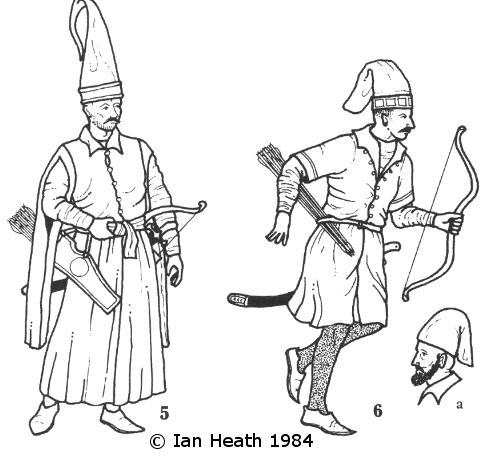
Shop Amazon - Create an Amazon Baby Registry
JANISSARIES, 15th CENTURY
An extract from Armies of the Middle Ages, Volume 2by Ian Heath
 |
|
| [Based on A Turkish Janissary, c. 1480, by Gentile Bellini.] | [c.f. Khusrau Parviz and Bahram Chubina fight a second time, 1501] |
